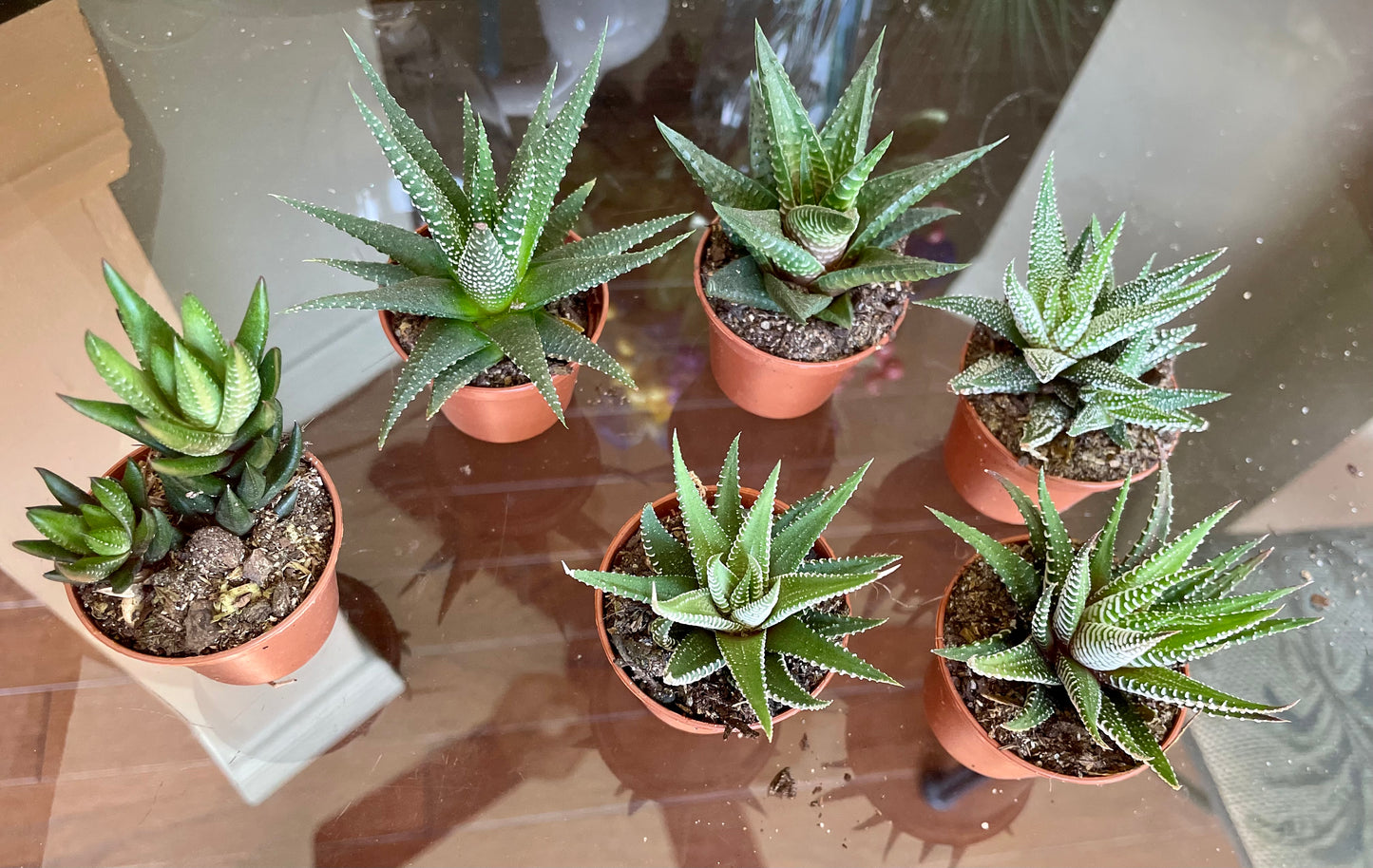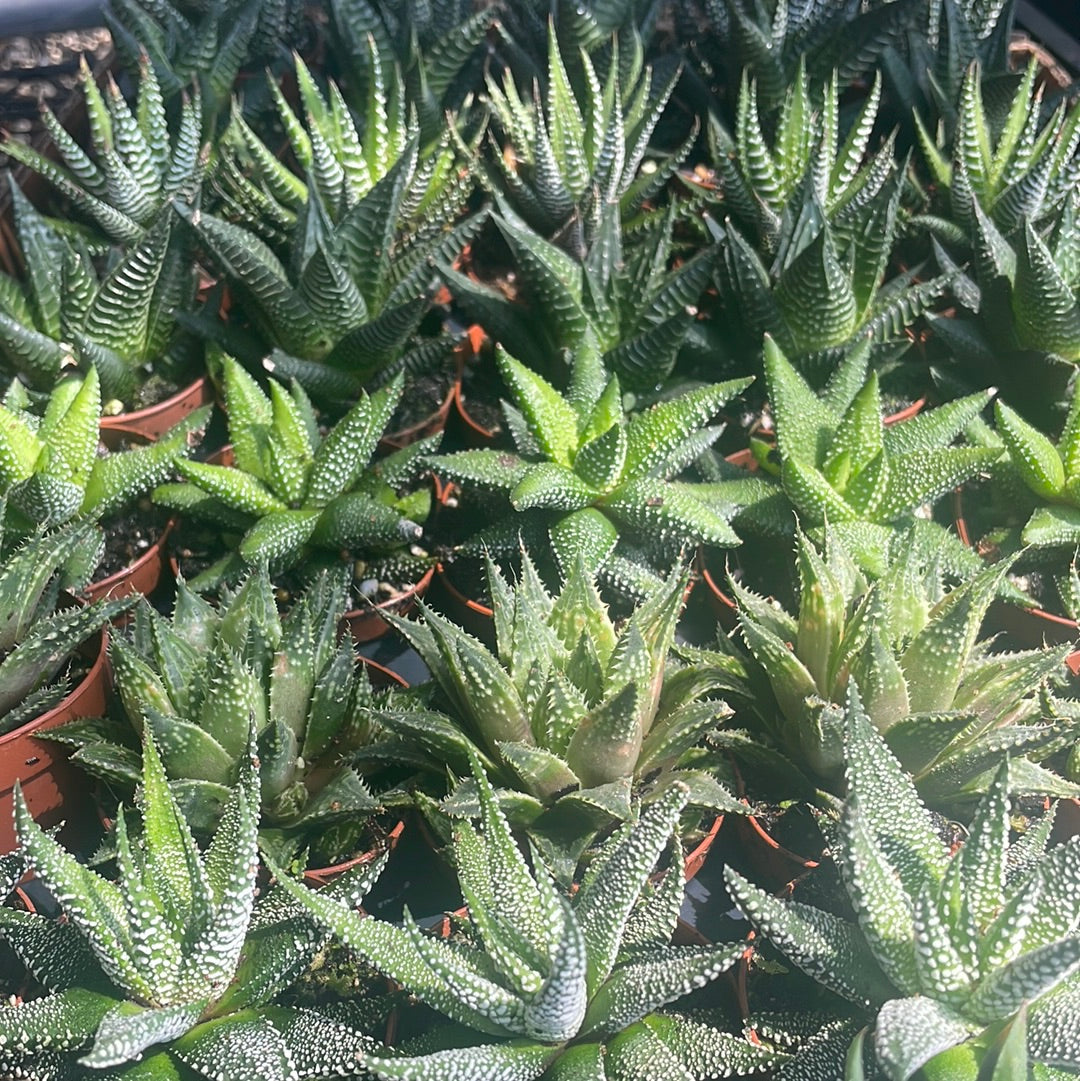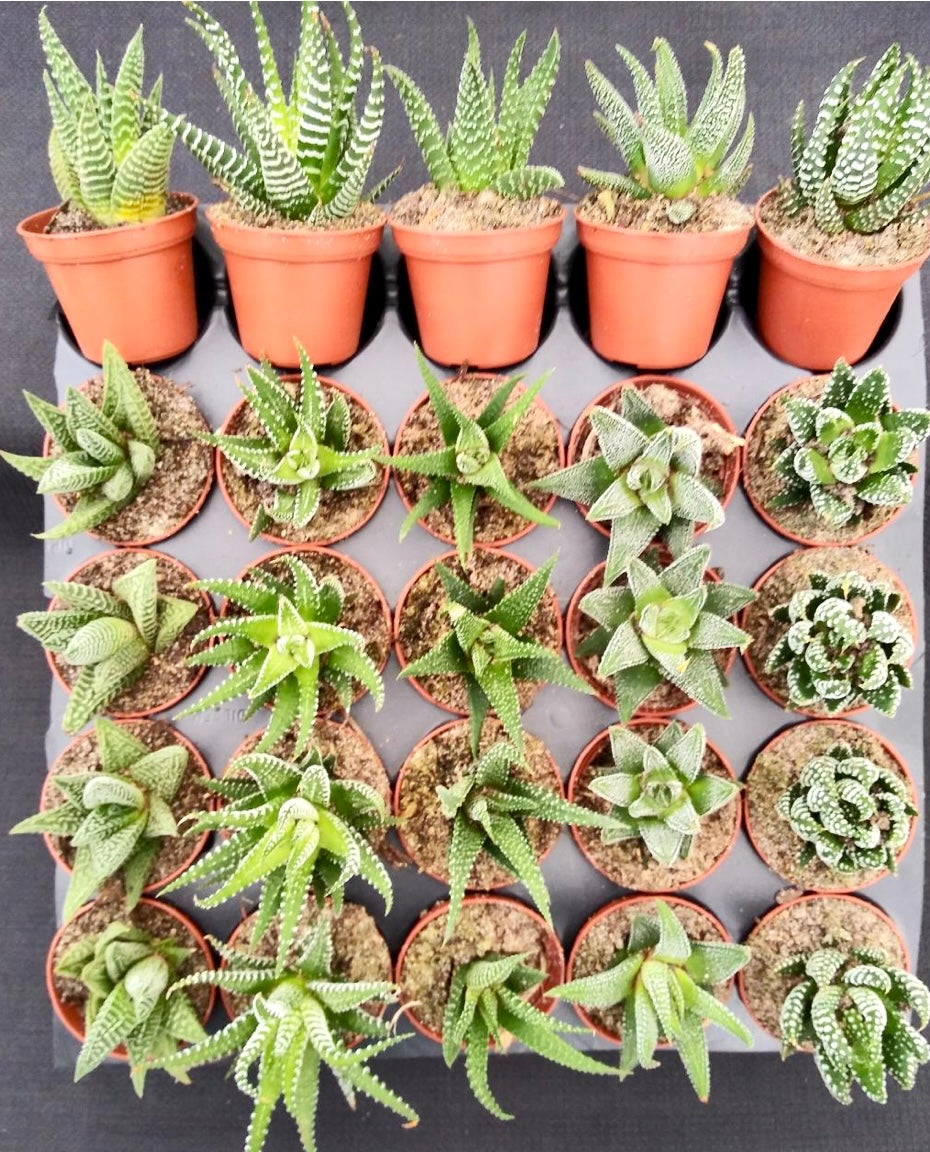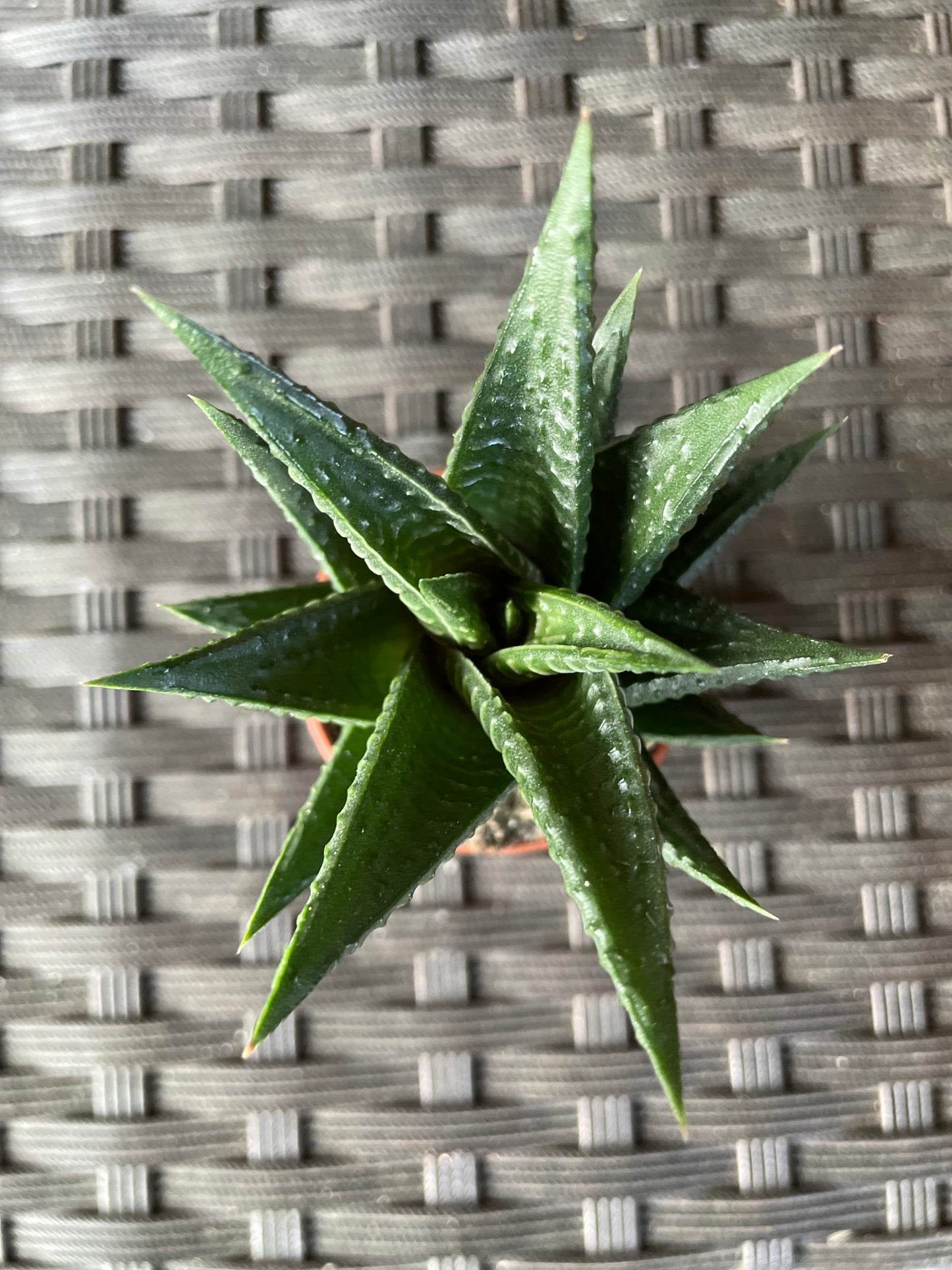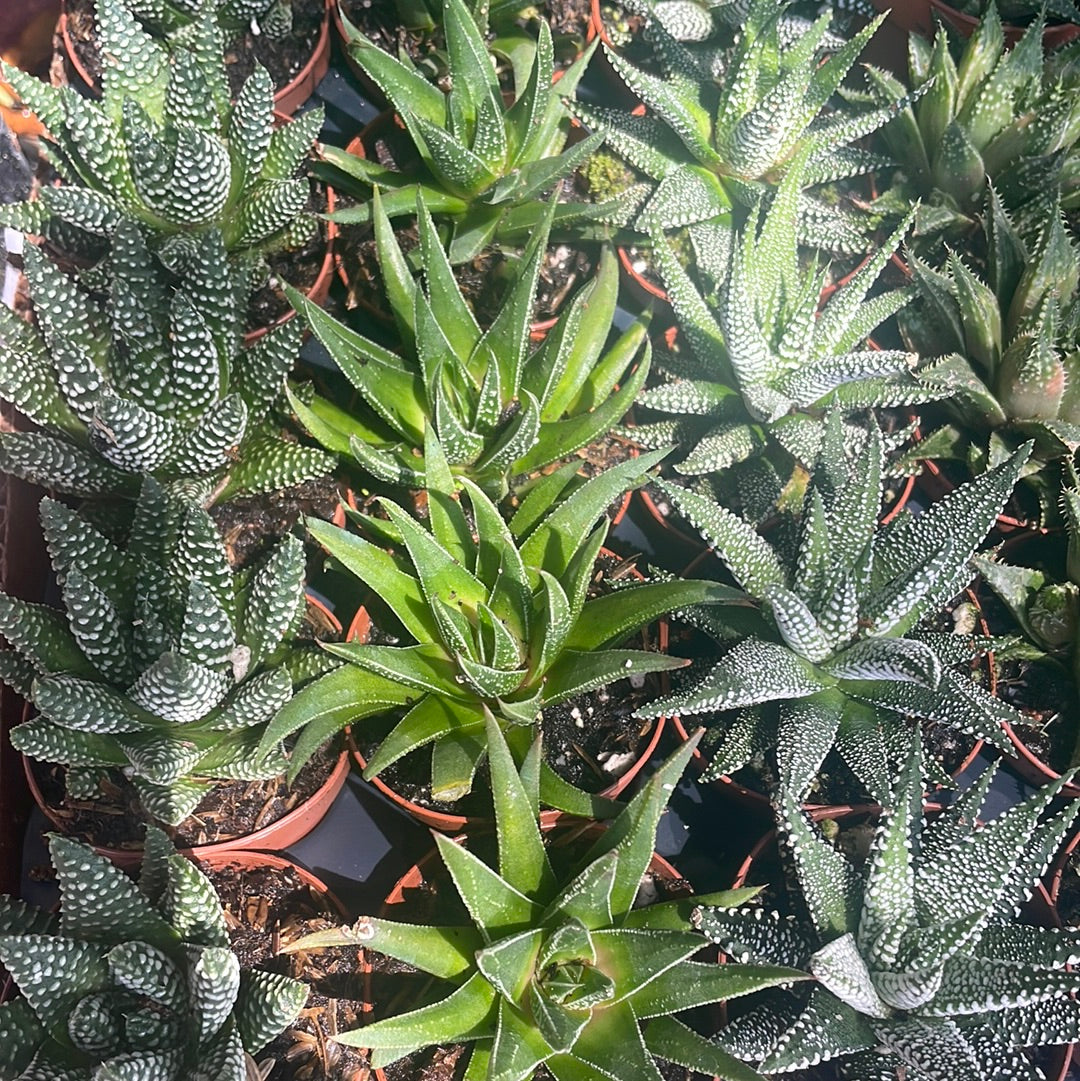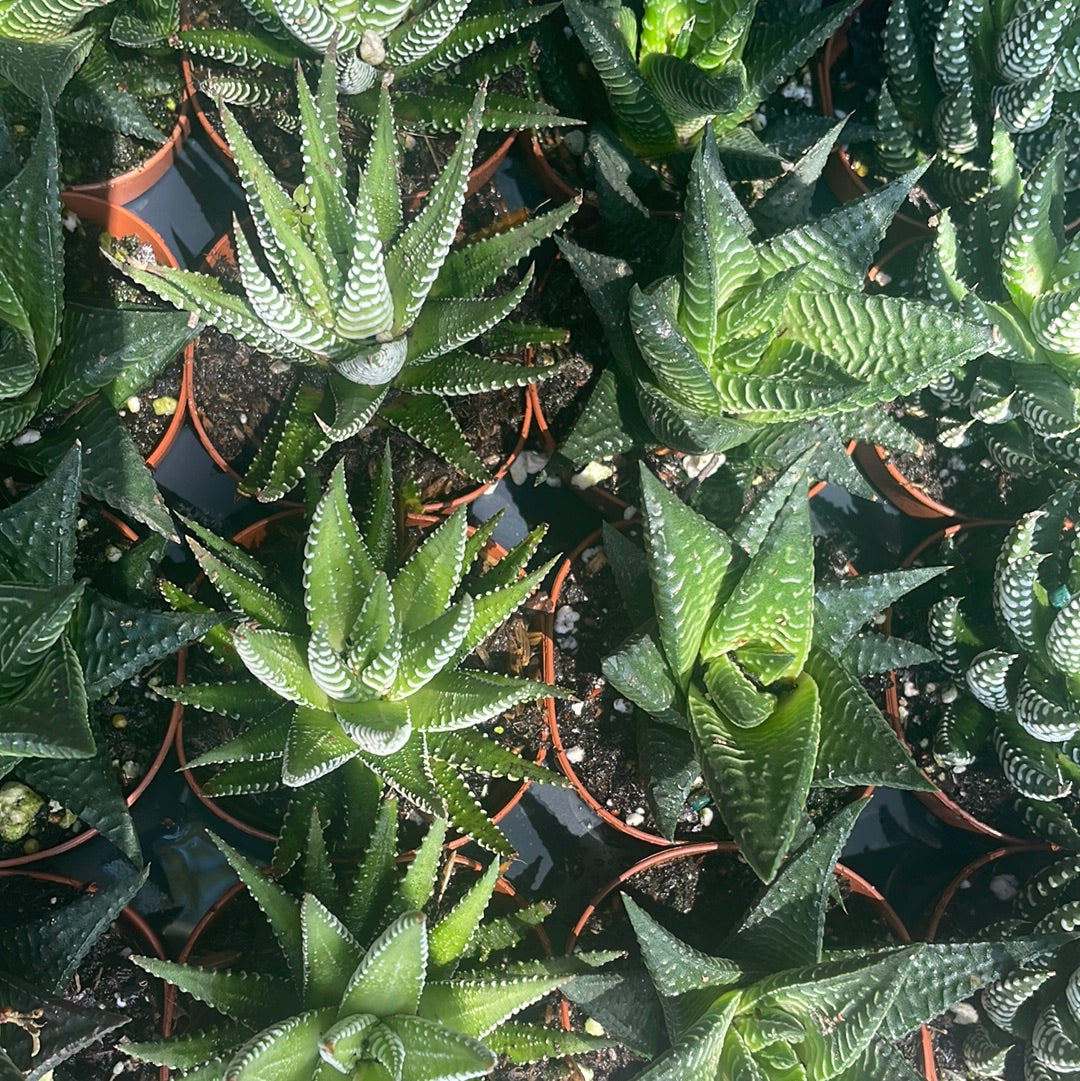Haworthia assorted
Couldn't load pickup availability
**Haworthia: A Stunning Succulent Beauty**
Haworthia is a diverse and captivating genus of succulent plants known for their intricate and unique rosette-like patterns. These plants belong to the Asphodelaceae family and are native to the arid regions of South Africa. Haworthias are popular among succulent enthusiasts and indoor plant lovers due to their low-maintenance requirements and striking appearance.
**Description:**
Haworthias come in a wide variety of sizes, shapes, and colors, making them a delightful addition to any succulent collection or home decor. Their distinctive feature is the arrangement of their leaves, which often grow in tightly-packed rosettes or clusters. The leaves can be smooth, textured, or even translucent, depending on the species. Some Haworthias have intricate patterns of stripes, spots, or raised tubercles on their leaves, giving them a visually appealing aesthetic.
**Care Guide:**
Caring for Haworthias is relatively straightforward, making them an excellent choice for both novice and experienced plant enthusiasts. Here's a basic care guide to ensure your Haworthia thrives:
1. **Light:**
Place your Haworthia in bright, indirect sunlight. While they can tolerate some direct sunlight, too much exposure can lead to sunburn. A north-facing window or a spot with filtered sunlight is ideal.
2. **Temperature:**
Haworthias prefer temperatures between 65°F to 80°F (18°C to 27°C) during the day and slightly cooler temperatures at night. Protect them from frost and extreme temperature fluctuations.
3. **Watering:**
Water your Haworthia sparingly, allowing the top inch (2.5 cm) of the soil to dry out between waterings. Overwatering can lead to root rot, so it's crucial to avoid soggy soil. During the winter months, reduce watering frequency.
4. **Soil:**
Plant your Haworthia in a well-draining succulent or cactus mix. You can also create your own mix by adding perlite or coarse sand to regular potting soil to improve drainage.
5. **Container:**
Choose a pot with drainage holes to prevent excess water from accumulating. Make sure the pot is slightly larger than the plant's current size, allowing room for growth.
6. **Fertilization:**
Feed your Haworthia with a diluted, balanced liquid fertilizer during the growing season (spring and summer) every 4-6 weeks. Avoid fertilizing during the dormant winter months.
7. **Propagation:**
Haworthias can be propagated through offsets (pups) that grow around the base of the main plant. Gently separate these offsets and allow them to dry before planting them in their own pots.
8. **Pests and Diseases:**
Haworthias are relatively resistant to pests and diseases, but still keep an eye out for signs of mealybugs, aphids, or fungal issues. If detected, treat the plant promptly with appropriate measures.
By following these care instructions, you can enjoy the beauty of your Haworthia as it flourishes and adds a touch of natural elegance to your living space. Remember, observing your plant and adjusting care based on its specific needs is key to its long-term health and vitality.
